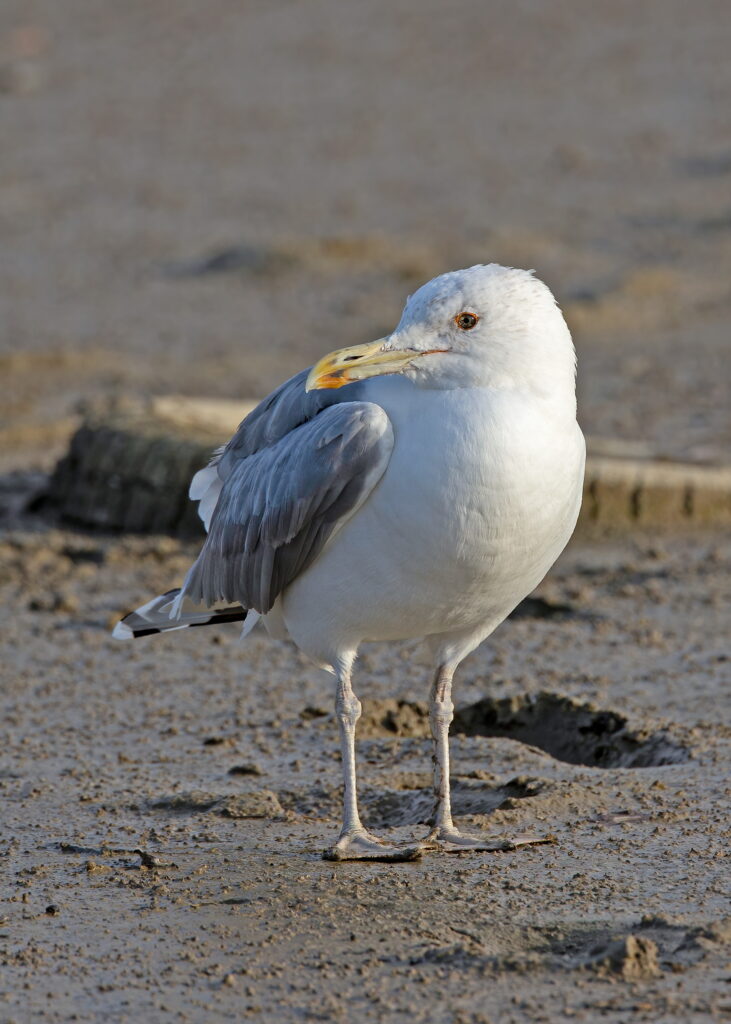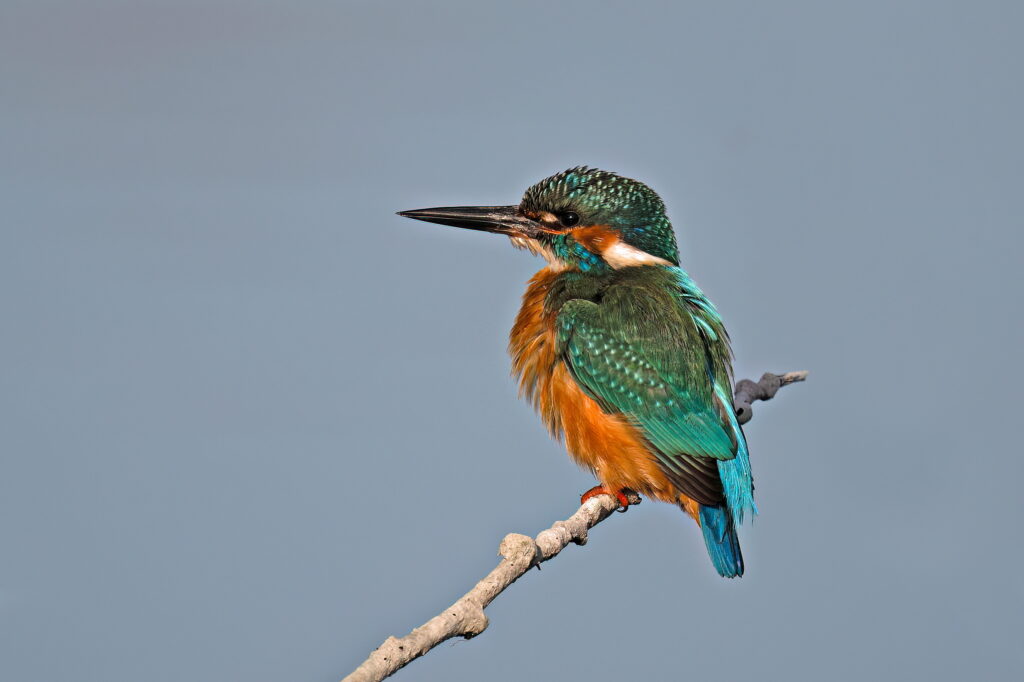The Eriskircher Ried at the Lake of Constance is one of the most valuable nature reserves in southern Germany. It lies on the German shore of the lake and extends from the Rotach estuary on the southeastern edge of Friedrichshafen to the Schussen estuary northwest of Langenargen. The area consists of wet meadows, old Schussen waterways with lush willow growth, damp thickets, and small remnants of riparian forests. The shallow water zones along an impressively long, largely protected shoreline of over 4 kilometers are particularly valuable, primarily for the bird population.
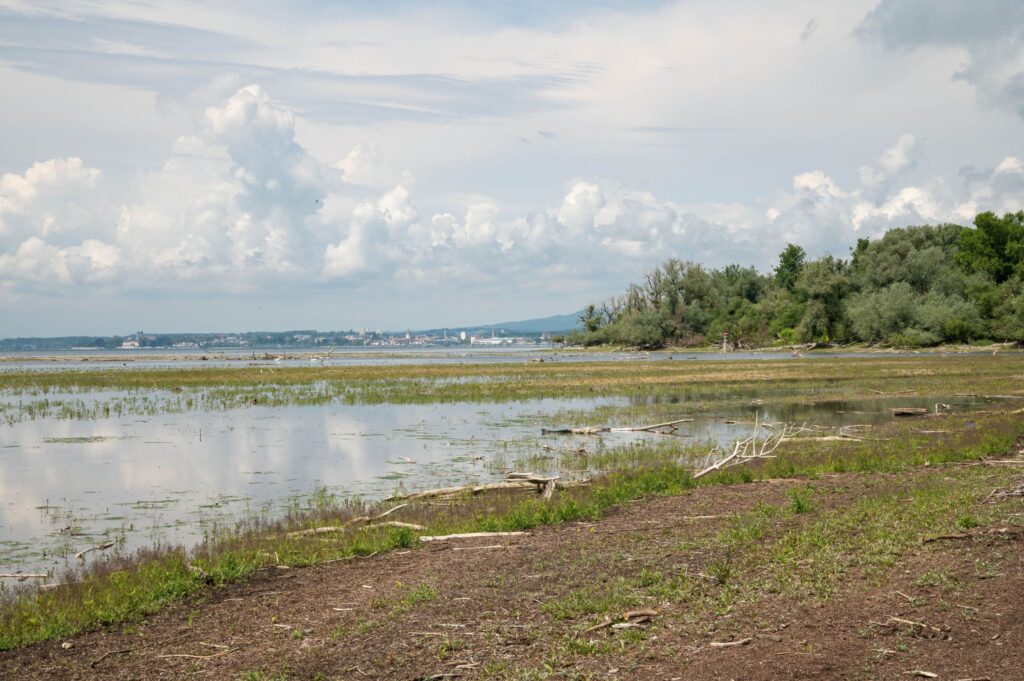
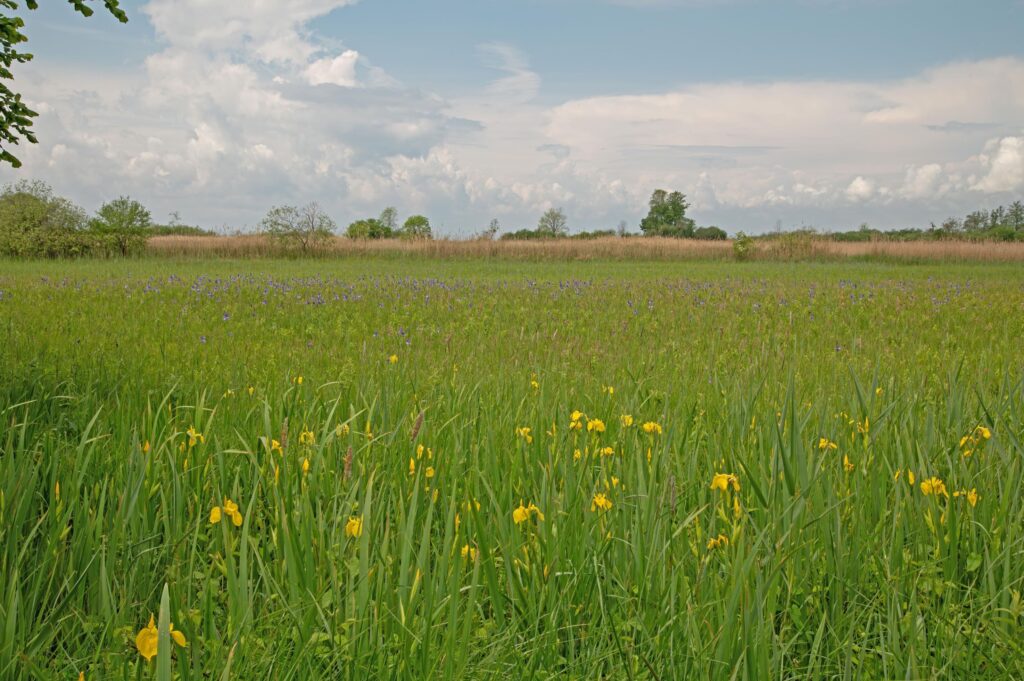
Unfortunately, the shore is only accessible to nature observers at a few points along this stretch. Fortunately, the observation hotspots are accessible, although some viewpoints require a good deal of walking or cycling to reach. The bicycle is the best means of transportation for a comprehensive exploration of the Ried, as the bike and hiking trails are well-developed. For disabled people who need to travel by car, the beach bath car park, which is subject to a fee, is the only convenient option for getting into the area and directly to Lake Constance, with sufficient parking space. Since there are only a few accessible spots available, one should be equipped with a good high-magnification spotting scope that offers a wide field of view zoom eyepiece for scanning and high final magnification for reliable identification. The Zeiss Harpia is the best choice for this duty.
The breeding bird species in the Eriskircher Ried have clearly decreased over the past few decades. Of the nearly 20 breeding pairs of Common Nightingale that originally existed, only individual birds remain today. Even the Red-backed Shrike has become rare, and the Tree Pipit is now missing from traditional locations in and around the Ried. The Woodpeckers, particularly the Great Spotted Woodpecker, but also Grey and Green Woodpecker, are still well represented in the wooded areas, as is the Golden Oriole. It takes a bit more luck to spot a Lesser Spotted Woodpecker, but sometimes even Black Woodpeckers can be spotted in the area. Due to the dramatic decline of many breeding bird species, the Eriskircher Ried has no outstanding highlights to offer in the summer months, aside from the sporadic appearance of a Melodious Warbler or even a Zitting Cisticola. For those interested in botany, however, the meadows between the village of Eriskirch and the “New” Beach Bath are a standout attraction. The notable stands of the blue Siberian Iris still bloom alongside smaller groups of the Yellow Iris from mid-May to early June. The paid parking lot at the “New” Bath is located at Strandbad 1 in Eriskirch. There is a ban on entering the adjacent meadows, which is why a pair of binoculars is useful for a closer look at the flowers.
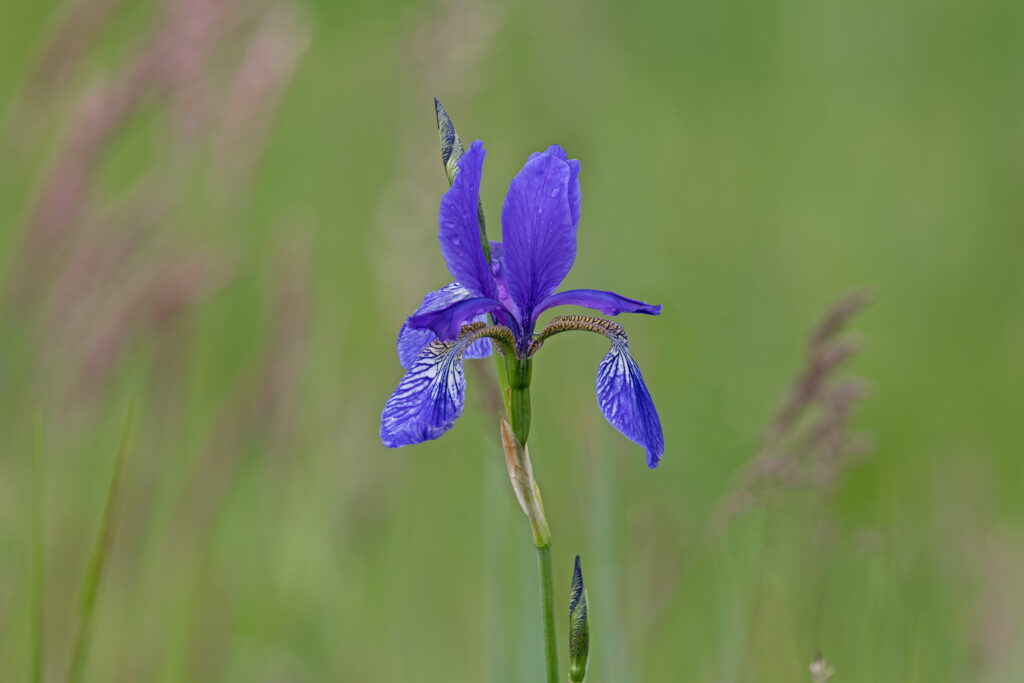
For ornithologists, the area is best visited during the spring and fall migrations, but also during the winter months. For the Lake Constance is an internationally significant wintering area for many waterfowl, which still gather in the Eriskircher Ried in numbers of up to five figures. Nature lovers from the surrounding area primarily visit the Whooper Swans, which appreciate the shallow water area of the reed and perform their melodic songs here.
The beauty of the Siberian Iris draws many nature enthusiasts to the meadows west of Eriskirch in late spring every year. With a good pair of binoculars, you can see enchanting details,
Over 300 individuals have been counted in the Eriskircher Ried in recent winters. They can be found along the entire shoreline between Friedrichshafen and the Schussen River mouth. Individual birds or small groups of Bewick´s Swans can often be found among the Whoopers. Most abundant amongst the ducks are Pochards and Tufted Ducks. A few Ferruginous Ducks can be spotted around them during winter. Smaller groups of Greater Scaup also occur. The best observation point is the eastern observation deck at the old beach bath, which can be reached from the parking lot in front of the Kaufland shopping center (Friedrichshafener Strasse 39 in Eriskirch). A spotting scope is essential here because the observation distances are relatively large. Even in front of the observation deck at the “New” Beach Bath, Great Scaups occasionally appear, especially when a hunting Goshawk temporarily drives the duck flocks away from their resting places at the old bath area.
Sea ducks visit the Eriskircher Ried mostly in winter in small numbers. Velvet Scoters usually appear in small groups. In addition, individual specimens of Common Eider, Common scoter, or Long-tailed Duck occasionally appear. For the Goldeneye, Lake Constance is the most important wintering ground in European inland waters, and they can be found in small groups almost everywhere in open waters. By no means frequent but also present everywhere at this time are small groups of Goosander.
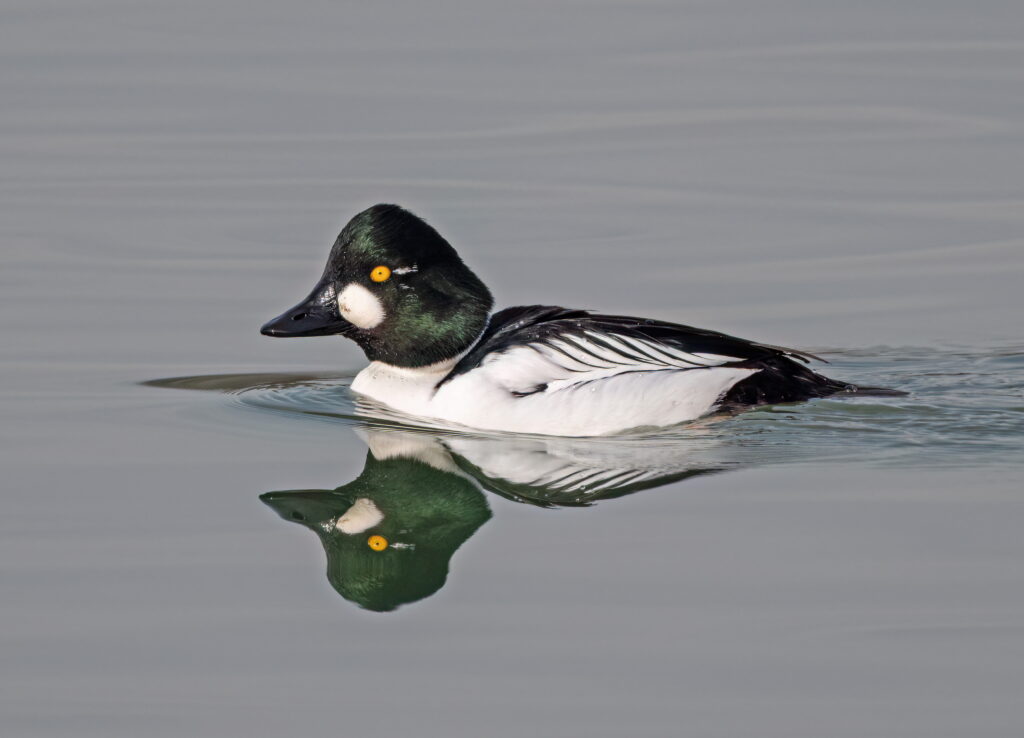
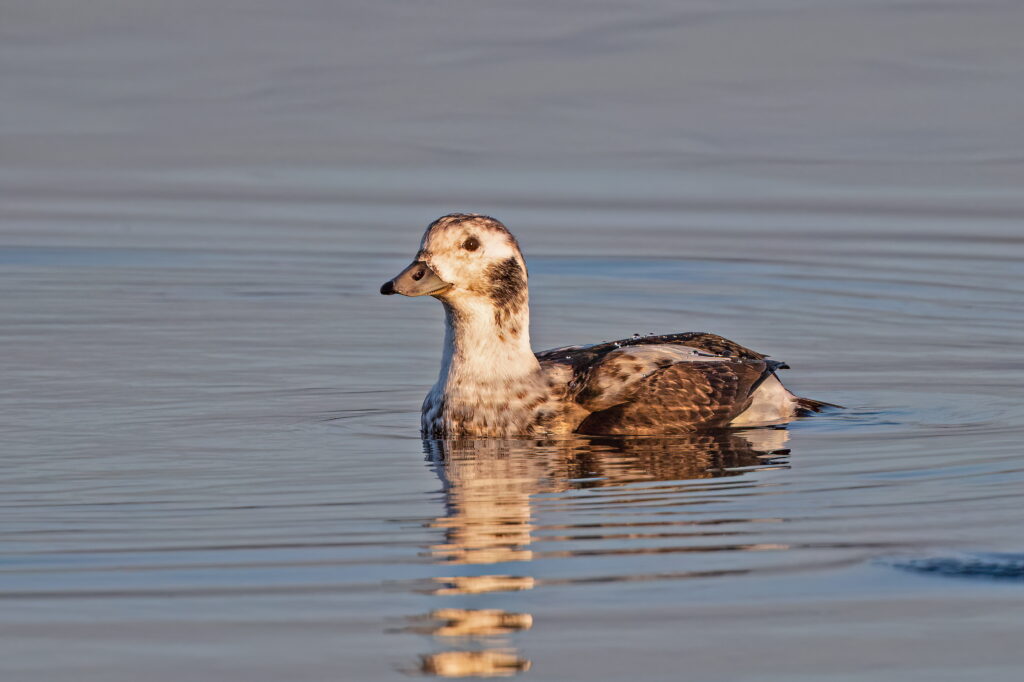
In the winter, almost all species of Ducks can be observed in front of the Eriskircher Ried. However, a very good spotting scope with high magnification is also required here, as the birds are usually far from the shore on the open water of Lake Constance. The weather also needs to be relatively cooperative, as strong winds and high waves make the birds hard to spot. The Great Crested Grebe is the most common of these, but Black-necked Grebes can often be seen from the old bath area. Rare Slavonian Grebes appear in small numbers almost every winter. Little Grebes can be reliably found around the Schussen estuary. For Red-necked Grebes, the western part of the Eriskircher Ried is the best observation option, especially the open waters in front of the Rotach estuary (Lindauer Strasse 2, Friedrichshafen), as well as the water zone west of Friedrichshafen in front of Manzell and Fischbach. Here, Black-throated Divers and Red-breasted Mergansers usually stay in small numbers.
While Black-throated Divers and rare Great Northern Divers use the entire water area between the Schussen estuary and Immenstaad, Red-throated Divers largely concentrate on the water surfaces in front of the old Bath up to the Schussen estuary. The latter is particularly interesting during bird migration, especially when the extensive mud flats in the shallow shore area are not covered by a very high-water level. Because of the low water level, the Schussen estuary becomes the best bird-watching spot in the Eriskircher Ried. Shorebirds, Terns and Gulls can easily be seen from here. The most common representatives among wading birds are Ruff, Dunlin, Wood Sandpiper and Common Sandpiper. Little and Temminck’s Stints appear briefly every year, often joined by Sanderlings. During the autumn migration, rare species such as Marsh Sandpiper or Pectoral Sandpiper can be spotted with a bit of luck. Access for those arriving by car is located at the Seeparkplatz near DLRG, at Untere Seestraße 120, Langenargen. However, overnight stays are prohibited here.
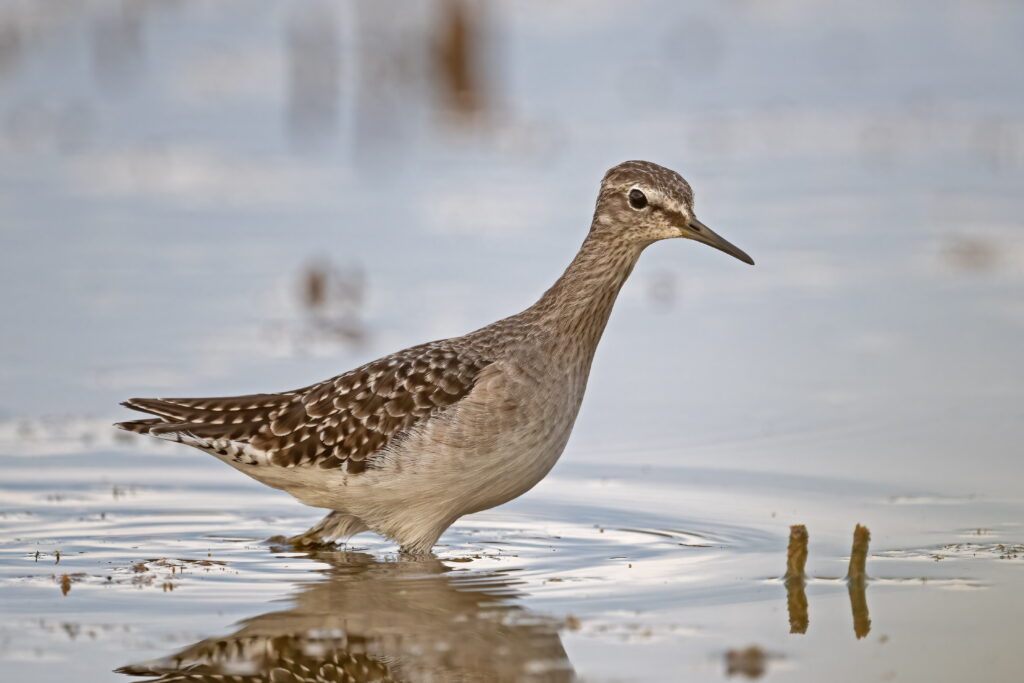
During migration, small groups of Wood Sandpiper can be found along the entire shoreline. They are especially easy to observe at the mouth of the Schussen River.
Different Terns like to visit the Schussen River mouth. In addition to the Common Tern, there are also occasional visits by Caspian tern, Sandwich Tern, and, less frequently, Arctic Tern or even Little Tern. Mediterranian and Caspian Gulls often rest on the mudflats, although the latter can be found in even greater numbers near the Rotach estuary in the fall and winter. Those equipped with a good Spotting Scope can comfortably observe the colorful Kingfisher perched on driftwood at both mouth areas, sometimes several of them. Black-crowned Night Herons are sometimes found by attentive observers in the autumn months within the riparian vegetation along the northern Schussen estuary.
